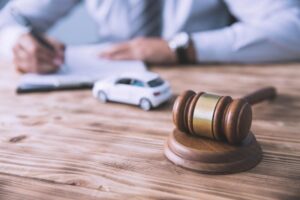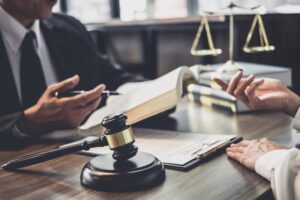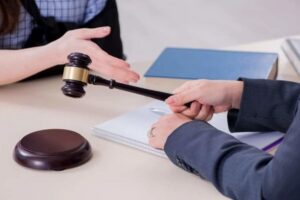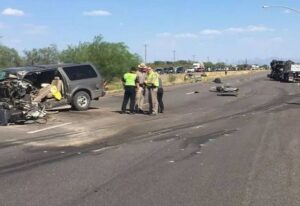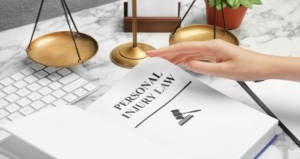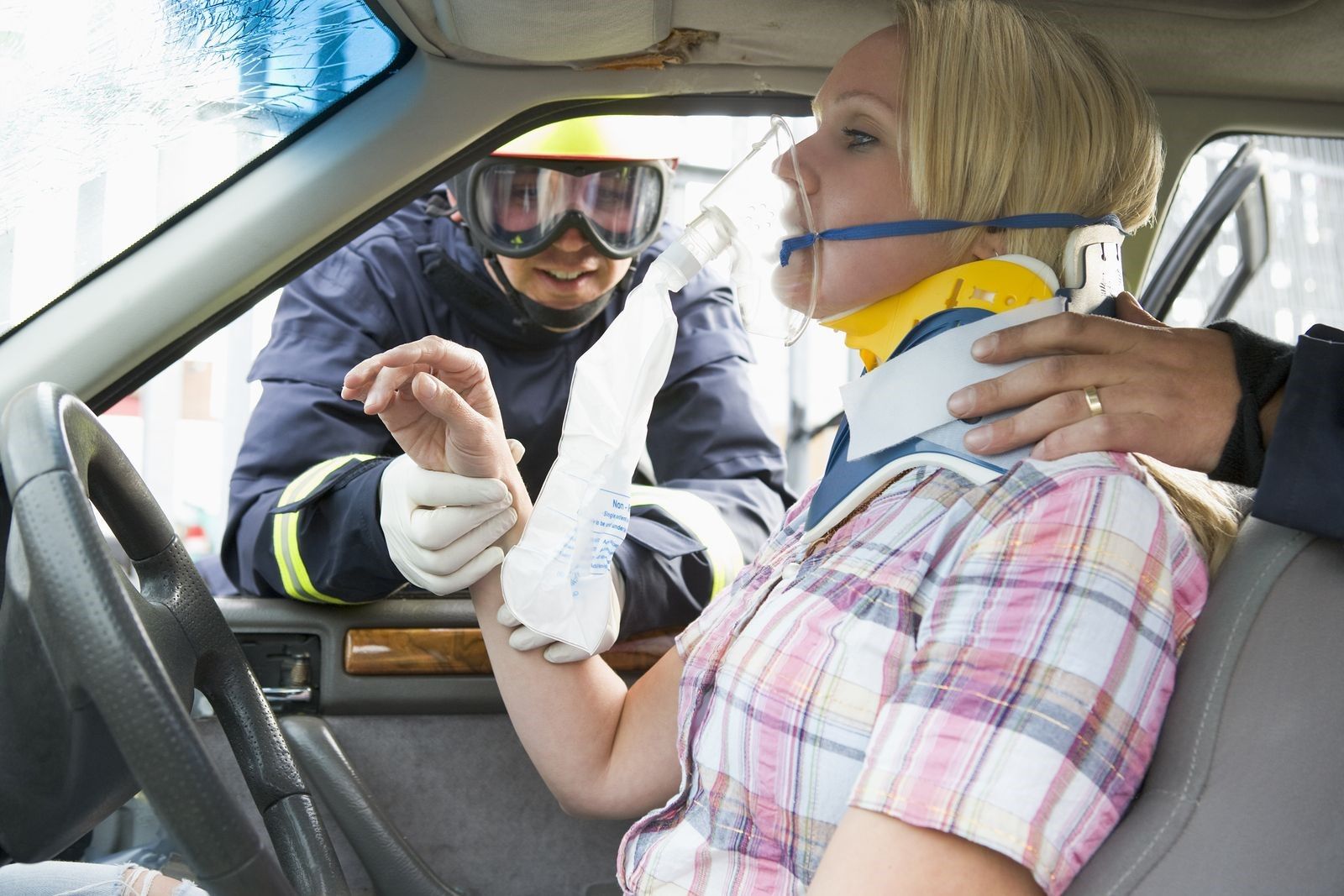
Background: using cell phones while driving is an inherently unsafe: Everyone knows now that it is unsafe to drink and drive, but the effects of cell phone use while driving are perhaps even more devastating, because the use of cell phones while driving is so wide-spread. According to the a National Safety Council fact sheet, drivers using cell phones account for nearly 25 percent of all motor vehicle crashes annually. In fact, research has shown that driving while using a cell phone is comparable to the devastating effects that alcohol causes to the motoring public. See, A Comparison of the Cell Phone Driver and the Drunk Driver, Human Factors, Vol. 48, No. 2, Summer 2006, pp. 381-391. Sadly, 81 percent of driver have admitted to using a cell phone while driving, according to the National Safety Council fact sheet.
In bringing your motions to compel cell phone records, it is important to bring the above-referenced documents to the attention of the judge hearing your motion. It is also crucial to let juries know of these dangers, because it will affect how the jury views the defendant’s conduct, even in cases where the defense admits to liability in a rear-end collision. It is not enough to stipulate to liability and let the defendant escape accountability to the jury for the despicable nature of using a cell phone while driving. If our firm finds out that the defendant was using a cell phone, we will attach a punitive damages cause of action to the complaint, alleging that doing so was despicable conduct within the meaning of Civil Code section 3294. If you have clear facts showing that there was cell phone usage, by all means, include a punitive damages allegation with the original complaint, so that you are not forced to make a motion to amend your complaint to allege punitive damages.
Don’t get timed out: It is important to recognize the key defense that the defendants possess and neutralize that defense immediately: timing. It can often take 6 months or more to get cell phone records from the time that you first notice the deposition duces tecum until you have the records in your hands. In most aspects of a personal injury case, the defense will try to stall and delay the case until it is time for trial, and discovery has closed, leaving the plaintiff with holes in her case. That is particularly true with cell phone records. The defendant will claim to have forgotten his cell phone number and the name of his cell phone carrier. He will claim to have lost his cell phone records. The cell phone carrier will throw up road blocks, too. In most cases, the judge won’t let you get the cell phone records from the carrier until you have demonstrated due diligence in getting the records from the defendant himself.
As you will see in this article and the associated subsequent articles, there is a long process for seeking these documents through written depositions, written discovery, meet-and-confer letters, amended responses by the defense, followed by more meet-and-confer letters, and ultimately, your motion to compel. If you don’t lay the foundation, or move too quickly, the discovery judge will deny your motion to compel. So be sure to build into your discovery plan ample time to go through the whole process. Compelling cell phone records is like baking a layer cake; you have to build it one layer at a time.
Also, keep in mind that if you want to amend your complaint to allege punitive damages, California Rules of Court, Rule 3.1324, will require you to demonstrate good cause why your motion was not brought earlier. Don’t hand the defense an easy escape due to lack of diligence in bringing the motion to amend the complaint to allege punitive damages pursuant to Civil Code section 3294.
Start your hunt right away: Look for indications of cell phone usage on the part of the defense very early on in the case. Start with the intake with your client. Include a question about cell phone usage on the part of both your client and the defense in your intake questionnaire.
If your client knows that the defendant was using their cell phone, your client will usually tell you, because by now most people are aware that using a cell phone while driving is despicable conduct, particularly if the defendant was not using the phone in a hands-free way. If you client does not mention cell phone usage, be sure to ask your client about cell phone usage in the same way that you would screen for drunk driving, because, as mentioned above, cell phones are the new drunk driving and can change the entire course of the litigation, as we will see. Insurers are willing to waive liability and settle early where their insureds were using their cell phones at the time of the collision in the same way that they do with drunk driving cases.
Sometimes clients will have seen the defendant on their cell phone a few minutes before the incident happened, for example, if they were passing the defendant and were later rear-ended by the defendant, so probe your client’s memory as to the first time that they saw the defendant, and think about if they saw any signs of the defendant using the cell phone.
After speaking with your client, think about other sources of information about the collision. Look at the police report, of course, to see if the reporting officer noted cell phone use. Contact all of the witnesses listed in the report to see if they noticed the defendant using a cell phone. Be sure to ask your clients and the witnesses if they saw the defendant appearing to speak to himself, because even hands-free driving is distracted driving, and the above-cited studies show that a driver’s response time is reduced even with hands-free usage. As if they saw the defendant gesturing while driving, because of course many people will gesture with their hands while on the phone.
Even if your client and the witnesses are unable to state that they saw direct evidence of cell phone usage, such as the defendant holding a cell phone to his ear or talking to no one while driving alone, it is possible to infer cell phone usage where the defendant has no logical story to explain their odd driving behavior. For example, if your client sees the vehicle coming up on them from behind and failing to slow down, your client might not have time to focus their gaze on the driver before impact, but the fact that the driver doesn’t slow down is a flag indicating that the driver was distracted. Weaving is of course another example of distracted driving, as is odd variations in speed. You will need all of these facts to persuade a discovery judge that there are some indicia of distracted driving before the judge will let you compel the defendant’s cell phone records.
File suit early: If you see flags indicated distracted driving, file suit immediately. You will need to begin the process of investigation through formal discovery immediately, because insurers are going to fight this discovery battle tooth and nail, as they are aware that the public is disgusted with distracted driving, and that distracted driving will open up their insured’s personal assets, creating a conflict. Of course, it is exactly this kind of conflict that you want to create for the purpose of leveraging a decent settlement for your client.
If you see flags indicating distracted driving, consider serving a deposition notice on the defendant 20 days after service is effected on them, pursuant to California Code of Civil Procedure section 2025.210(b) which provides in pertinent part as follows:
2025.210(b) The plaintiff may serve a deposition notice without leave of court on any date that is 20 days after the service of the summons on, or appearance by, any defendant. On motion with or without notice, the court, for good cause shown, may grant to a plaintiff leave to serve a deposition notice on an earlier date.
The prevailing wisdom is that you should serve form interrogatories by mail after receiving the defendant’s answer, but it is exactly that kind of supposed “common sense” that you want to avoid in these cases. You want to send the defense a signal that you are different, and they should not expect “the usual” from you in any aspect of this case. It also sends the defense a signal that you are not going to permit them to enjoy their primary defense tactic, that of stall and delay. This practice also gives you access to the defendant before the defense adjuster and defense attorney have had extra time to help the defendant formulate false testimony. In their haste to prepare an answer, the defense might not have time to screen the defendant for cell phone usage, and so the defendant might be unwary of the need to prevaricate about his cell phone usage.
After serving the complaint and summons, fax and mail the defense adjuster to let them know that service has been effected, and let them know that you expect a timely answer to the complaint. Then serve the deposition notice, and again fax and mail the defense with a letter saying that you expect the defendant to appear on the date noticed for the deposition. Make sure that you give yourself enough time to actually get the deposition notice served. Code of Civil Procedure section 2025.270(a) requires 10 days’ notice.
The defense attorney will likely phone you to say that there is a conflict in their schedule, but you should politely and persistently insist on an early deposition for the defendant. When the defense attorney asks what the rush is all about, tell them that it is the plaintiff’s job to move the ball, and that the defense should expect to see this pace continued all throughout the case. Do not, of course, talk about your interest in getting discovery of cell phone usage at this point. The defense will not understand why you are pushing the case so quickly, and it will make them start to question their assumptions about what is “normal” in a case, including their “usual” evaluation of the ultimate case value.
The purloined letter, hidden in plain view: You are going to want to include a duces tecum demand with your deposition notice. In that duces tecum demand, you are going to want to ask for cell phone records. Be sure to bury the request for the cell phone records in the middle of the demand somewhere, well after the usual request for photographs and statements of the plaintiff and witnesses, etc, unless you have alleged punitive damages in your complaint, in which case the cell phone usage will be front and center. Be sure to serve along with the deposition subpoena set of form interrogatories, a standard request for production of documents, a set of specially-prepared interrogatories, if that is needed in your case, and a request for admissions. All of these documents can be served any time that is 10 days after service of the summons on the defendant. See C.C.P. sections 2030.020, 2031.020, and 2033.020, respectively.
It is important to serve a standard set of requests for admissions, along with the deposition notice and the other documents. The requests for admissions should certainly ask the defendant to admit the facts of liability from your client’s perspective, and should ask them to admit the ultimate fact that the defendant is at fault for causing the collision. This is particularly true if the case is a rear-ender, because the defense attorney will oppose the motion to compel cell phone records on the basis of that the cell phones are not relevant in a rear-end collision. When the defendant denies liability in the request for admissions, as they inevitably will, you now have ammunition to show the discovery judge that liability is disputed, and therefore the cell phone records will go to the issue of fault.
Be thorough in deposing the defendant on how the collision happened: If you have spotted one of the flags of distracted driving, typically the defendant will not admit cell phone use. You will need to first lay the foundation for the erratic driving. Be sure to begin the deposition with a benign tone toward the deponent. Don’t clue them into the fact that you are going to press them later in the deposition, because they will become defensive, and they won’t give you the key facts that lay the foundation for the flags of distracted driving.
The defendant will typically admit that they rear-ended your client, if that is the case, but they will gloss over the facts leading up to the impact. You will definitely want to ask them when it was that they noticed that your client was stopped, and what they did to avoid the collision. You can ask them lead-in questions such as “it sounds like you were a bit distracted” or “it sounds like your attention drifted off of the road for a little bit.” Then, ask them if their windows in the car were rolled up or rolled down. Ask them if their radio was playing. Ask them if they had some trouble keeping their vehicle in their lane.
Then ask them if they were using their cell phone at the time of the collision. If they say no, ask them when the last time was that they used their cell phone before the collision. Ask them where they kept their cell phone. Was it attached to their belt? Was it in a purse or brief case? If there were other occupants in the defendants’ vehicle, be sure to set their depositions for a time immediately following the defendant’s deposition, so that the defendant will be clued into the fact that his fabrications might be contradicted by other sworn testimony.
Sample duces tecum demand in commercial driving cases: You can count on the defendant to be evasive in deposition. It is not uncommon for the defendant to say that they don’t remember their cell phone number or the name of their cell phone carrier! If that is the case, you will need to make sure that you have requested collision reports and bills of lading applicable to the shipment that the defendant was carrying, in case the driver’s cell phone number is there. Here is some language that would cover those items:
All written collision reports prepared by defendant Donald T. Driver pertaining to the subject collision.
All drivers’ time sheets, log books (regardless of form) involved in recording the subject tractor truck’s usage and mileage by all drivers in the 72 hours prior to the subject collision.
Don’t assume that the defense attorney will object to the collision report prepared by the driver. It might be that the defense attorney will need to use the collision report to refresh the recollection of the driver, and so might give up the collision report, rather than argue that it was an attorney-client communication prepared by the driver for the insurance adjuster to prepare for litigation.
Sample language for special interrogatories seeking the defendants’ cell phone info: If the defendant claims in deposition to have forgotten their cell phone number or the name of their carrier, you will need to serve specially-prepared interrogatories to elicit that information. Here are some sample questions:
State the name of all mobile telephone carriers used by defendant Donald T. Driver on the date of the subject incident which is the subject of this lawsuit.
State the name of any mobile telephone carrier with whom defendant Donald T. Driver had a contract for mobile telephone service on the date of the subject which is the subject of this lawsuit.
State the mobile telephone number(s) of any mobile telephone(s) for which defendant Donald T. Driver had active service on the date of the subject incident.
State the name of the mobile telephone carrier providing service for each of the mobile telephone numbers for which defendant Donald T. Driver had active service on the date of the subject incident.
State the mobile telephone number(s) of any active mobile telephone(s) provided to defendant Donald T. Driver by his employer on the date of the subject incident.
State the name of the mobile telephone carrier providing service for each of the mobile telephone numbers provided to defendant Donald T. Driver by his employer on the date of the subject incident.
Was defendant Donald T. Driver using a mobile telephone for driving directions at the time of the subject collision?
Was defendant Donald T. Driver using a mobile telephone for voice communications at the time of the subject collision?
Was defendant Donald T. Driver using a mobile telephone for text communications at the time of the subject collision?
Was defendant Donald T. Driver using a mobile telephone for any purpose at the time of the subject collision?
When was the last time before the subject collision that defendant Donald T. Driver used a mobile telephone for any purpose?
IDENTIFY the last person that defendant Donald T. Driver spoke with by mobile telephone preceding the subject collision?
As used in these interrogatories, “IDENTIFY” means to provide the name, address, and a telephone number of the person to be identified.
Sample language requesting cell phone records: Below is an example of language that you can use in requesting cell phone records. Be sure to include questions that are both narrowly directed to the time of the collision, as well as questions that are broader, so that the defense won’t say that they don’t have records which are precisely that exact. Bear in mind that the defendant will typically say that they are not in the possession, custody, and control of the requested records. Your primary purpose in requesting these records is to demonstrate to the discovery judge that it will be necessary to compel the defendant to sign a release of records, because the defendant will, by that time, have answered these questions saying that they don’t have possession of the records. In most cases, the only custodian of the records will be the carriers, but you have to set up the defendant by asking these questions first.
Produce all contracts for the delivery of mobile telephony service entered into between defendant Donald T. Driver and any mobile telephony carrier which was in effect at the time of the subject collision.
Produce all contracts for the delivery of mobile telephony service entered into between defendant Donald T. Driver’s employer and any mobile telephony carrier which provided service for defendant Donald T. Driver’s use in effect at the time of the subject collision.
Produce any and all billing statements in the possession, custody or control of the responding defendants for mobile telephony service used by defendant Donald T. Driver for mobile telephony service which was in effect for the billing period which covered the date of service for May 1, 2008 [insert the date of your subject collision].
Produce any and all billing statements covering the period of 10:00 a.m. through 2:00 p.m. on the day of the subject collision for mobile telephony service used by defendant Donald T. Driver.
You are going to have to customize the language above to fit your case. If the collision happened at 12:00 noon, for example, you will want to go back to 10:00 a.m. and forward to 2:00 p.m. to make sure that you get the data for the subject call, in case the parties or the reporting police officer got the time of the collision a bit off.
Conclusion: It may be a long haul to get cell phone records in car accident litigation, start now: You can count on both the defendant and the defense attorney to fight tooth and nail to prevent you from getting your hands on the requested cell phone records. Start your hunt early, or you will find that you are right up against the discovery cut-off without your records, or without adequate time to amend your complaint to allege punitive damages.

